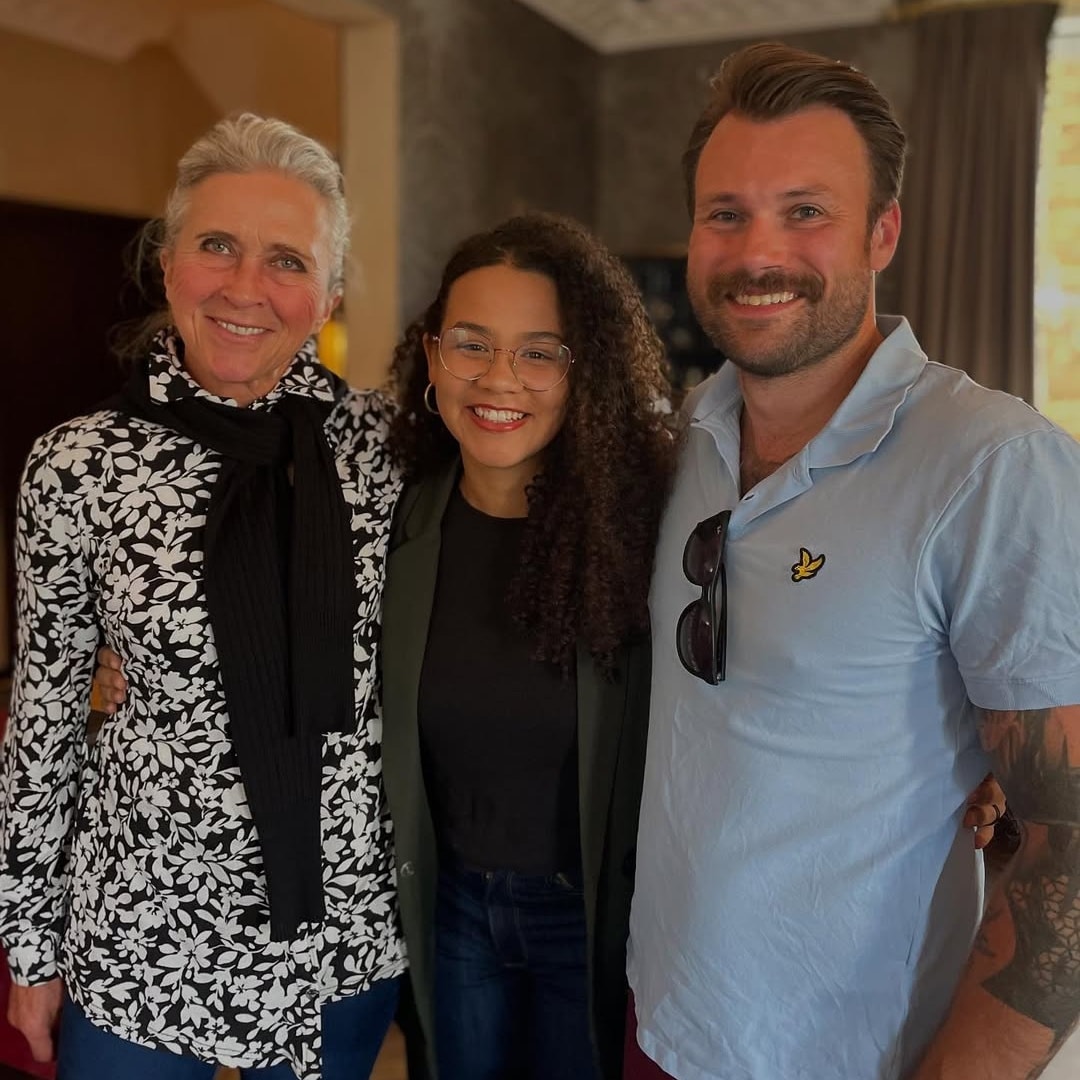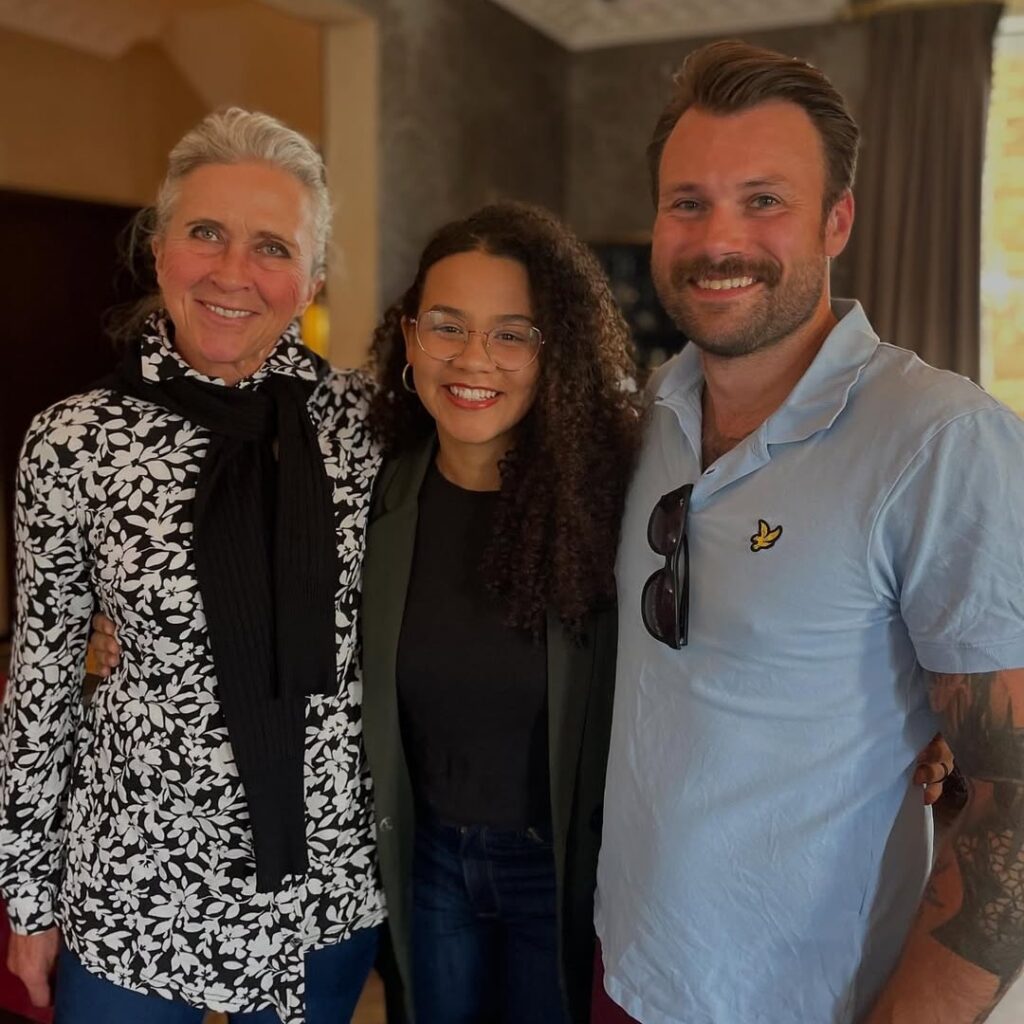 Viticulturist Rosa Kruger, winemaker Kiara Scott and Daniel Grigg of Museum Wines at the launch of Hazendal Rosé 2025.
Viticulturist Rosa Kruger, winemaker Kiara Scott and Daniel Grigg of Museum Wines at the launch of Hazendal Rosé 2025.
The following received via email from Daniel Grigg, managing director of UK specialist merchant Museum Wines:
South Africa. A country that will celebrate the 367th birthday of its wine industry on 2 February 2026. Grapes grown in the Cape winelands were being fermented to produce wine 117 years before the United States of America was founded. And yet, in my opinion, South Africa is still at the beginning of its exciting journey and presents one of the most promising propositions for commercial success and growth in the international market.
Broadly speaking, fellow New World countries have commercially pigeonholed themselves into a few signature wines despite not being bound by Denomination of Origin regulations like their Old World peers. California does Cabernet, Australia does Shiraz, New Zealand does Sauvignon Blanc, Argentina does Malbec, and so on. There are exceptions, of course, but it’s the rules that people remember.
The same may once have been true for South Africa. When I started my wine journey as an enthusiastic consumer in my late teens, some twenty years ago, I found both reds and whites rather homogenous. Even when I began working in the industry in my early twenties, what I encountered were Chenin Blancs with little character, Chardonnays with too much oak, and smoky reds that all tasted alike, whether single varietals or blends.
The diversity of styles now being produced in South Africa is surely becoming its calling card. Characterful, serious Chenin Blancs offer tremendous bang for your buck (or rumpus for your rand) and are seducing lapsed Burgundy drinkers in the UK market who can’t – or understandably don’t want to – pay twice or thrice as much for Mâcon-Villages. Vineyards in Stellenbosch can produce ethereal, beguiling Cinsault from old vines as well as serious Cabernets and Bordeaux blends. Plantings of Palomino and Colombard, once destined for bulk brandy, are now being repurposed to make exciting and distinctive white wines.
Then, of course, there’s the renaissance of Pinotage which, a century after its conception, is being championed in a variety of styles – from Beaujolais-esque, brightly fruited expressions with minimal oak to richer, more opulent iterations that confidently hold their own alongside illustrious names from France, Italy, and Spain.
One area of enormous potential lies in one of South Africa’s most established styles: Cap Classique. The brand with the highest sparkling wine sales in the UK remains Moët & Chandon, despite prices that bear little relation to what’s in the bottle. Champagne continues to enjoy an almost unchallenged monopoly on traditional-method sparkling wine.
While there are some excellent examples from England, they’ll always be roughly the same price as Champagne, given land, labour, and yield constraints. Cava’s reputation is tarnished (possibly beyond repair) by cheap supermarket versions; no one knows what Franciacorta is; and I’ve yet to taste anything noteworthy from New Zealand or Argentina. Australia and the US suffer the same issue as England – the best are expensive. After fifteen years in wine retail, I can tell you it’s hard to sell something if it costs the same as what customers already know they want.
This is where South Africa can excel – offering high-quality sparkling wines aged 36–48 months on lees, two or three times longer than many entry-level Champagnes, yet selling for less than half the price of a Grand Marque. “Take two bottles and some change, sir.” Offer quality and quantity, and the wine-drinking public will gleefully take up the offer.
Another near-monopoly the French have enjoyed is Provence rosé. When I started visiting South Africa a decade ago, it was as if winemakers had taken the rulebook and used it as kindling on the braai – dark red or fluorescent wines with high alcohol levels that were impossible to sell, even if they did make for a raucous lunch or two.
A short time later, the Cape was producing serious rosé in an alluring onion-skin hue. Commercially viable, certainly, though often pitched without the strong value-for-money proposition of Cap Classique. Increasingly, I see such wines with an FOB of £9 – 12 (almost double what I can buy Saint-Victoire Côtes de Provence for), putting them on UK shelves at around £30 – well above celebrity-backed French counterparts. One has to ask: why price them 50% higher than a Cap Classique with so much more time invested in production?
South Africa is poised to become the hot topic of the wine world, a status it richly deserves. But I’d urge caution: producers must avoid pricing themselves out too soon. There are incredible wines capable of enormous success under £30 a bottle, delivering far more pleasure than almost anything else at that price.
The temptation to raise prices too quickly risks sudden promotion to the big leagues – competing with the established old guard of Bordeaux, Rioja, Ribera del Duero, Barolo, and Brunello once you hit £40–50 on the shelf.
I have every confidence South Africa’s best wines will earn their place there – and still offer better value than most Old or New World peers – but producers must be mindful of the current climate. Going in hard at a high price because you think the wine is lekker and fancy a payday won’t inspire buyers to take the plunge.
While consumers can still find outstanding Barolo and Bordeaux from 2016 – names like Château Langoa-Barton and G.D. Vajra – at under £50 (including duty and VAT), you need to give them a reason to choose your wine, which they’ve probably never heard of, instead.
At a time when buyers are spoilt for choice and cherry-picking only the best, it’s wiser to invest in your own stock, build a market through scarcity at a modest price, and raise prices gradually with demand.
We’ve waited almost 367 years for a seat at the table – put down the 15% rosé, stay the course, and make sure you’re still there for the brandy at the end of the night.


Dining and Cooking